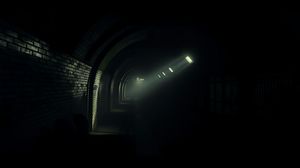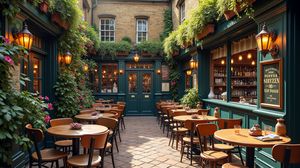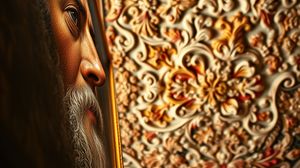
Wellington Arch, often mistaken as "The Duke of Wellington's Arch," stands majestically at Hyde Park Corner, a significant landmark steeped in history and grandeur. Originally designed in 1825 by Decimus Burton, the arch was intended to commemorate Britain's victories in the Napoleonic Wars. It has stood as a testament to military success and architectural innovation. The arch was initially crowned with an equestrian statue of the Duke of Wellington, however, it was later replaced with the stunning quadriga that we see today, symbolizing the Angel of Peace descending on the chariot of war.
What makes Wellington Arch truly remarkable is its status as a Grade I listed building, highlighting its exceptional historical and architectural interest. Despite its grand scale and imposing figure, many are intrigued to learn that you can climb the arch itself. The interior houses viewing galleries that offer breathtaking views across the Royal Parks and the busy London thoroughfares below, allowing visitors to experience the bustling city from a unique vantage point.
The arch also plays host to a fascinating exhibition area inside, adding an informative aspect to any visit. It details the history and significance of the arch and the surrounding area, adding depth and context that are both educational and engaging. This feature makes it a captivating stop for history enthusiasts and casual visitors alike.
Interestingly, the arch was initially located directly opposite Apsley House—home to the Duke of Wellington—but was moved in the late 19th century to its current location to improve traffic flow. This relocation is unique in the sense that such a significant monument was physically shifted to accommodate the city's evolving infrastructure needs.
For those with an interest in engineering and transportation, the arch's current position straddles one of London's busiest traffic intersections, Hyde Park Corner. This aspect adds a layer of urban intrigue, as modern vehicles zoom past a monument that harks back to horse-drawn carriages and long military parades.

Making the Most of Your Visit:
If you're planning to take in the views from the top, definitely bring your camera! The perspective over the Royal Parks and surrounding architecture offers some great photo opportunities, especially at sunset.
The exhibition inside the arch does a fantastic job of detailing not just the history of the arch, but the significant events it's witnessed over the years. It's worth setting aside some time to really delve into the informative displays—it's not just about the sculptural beauty outside!
Consider visiting on a weekday if possible. The arch is positioned at an incredibly busy traffic interchange, and weekends can get quite crowded. A weekday visit might allow for a more relaxed experience both inside and out.
The interior of the arch can be a bit chillier, particularly in the off-peak months, so dress in layers. It never hurts to be prepared for a bit of a breeze!
Make sure you look up as you enter the arch; the structure often plays host to events or art installations that might surprise and delight you as an unexpected bonus to your visit.

Visiting Times & Costs:
Wellington Arch is open to the public and offers access to its exhibition and viewing galleries. Please note the following details for your visit:
- Opening Times:
- Generally open from 10:00 a.m. to 5:00 p.m., but it's advisable to check closer to your visit as times may vary by season or due to special events.
- Closed during certain holidays, usually around Christmas and New Year. It's a good idea to confirm specific dates before planning your visit.
- Adults: Typically charged an entrance fee.
- Children, concessions, and English Heritage members often enjoy reduced rates or free entry; check current rates as they can change.
- It is advised to inquire about family or group tickets if applicable.
- The arch has a lift providing access to the galleries, making it accessible for those with mobility issues. However, some areas may have limited accessibility due to historical constraints.
- Accessible restrooms are available, and visitors with specific needs are encouraged to contact visitor services further in advance of their visit to ensure a smooth experience.

Address & Map:

Nearby:























